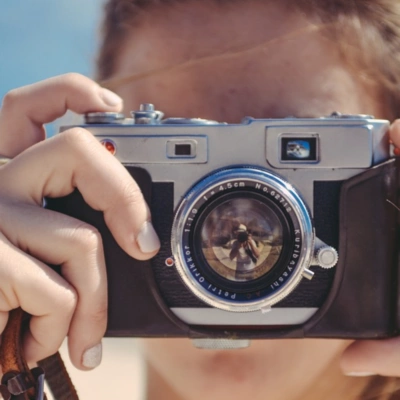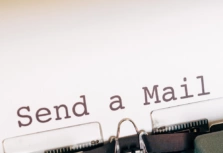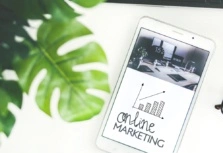Shopify is a top-rated e-commerce solution with everything a merchant needs to sell online AND in a physical store. Ideal for both - aspiring beginners and expert professionals, Shopify takes away much of the hassle that comes with running a business. It offers a host of tools that makes it easy to accelerate the sales funnel.
But despite its supportive interface, marketers often feel lost when the time comes to upload their product details on the dashboard. Because just like any other online store, Shopify has basic guidelines in place for product images. And adhering to the optimal image size for Shopify stores is ideal for better conversions.
Fortunately, the Shopify image requirements are pretty simple to follow. And once you perfect the best practices for Shopify photo sizes, you will be able to create an eye-catchy store and provide your visitors with a smooth experience.
In this post, let’s explore everything you need to know about the image size for Shopify products and how to optimize them for better visibility.
Why are image sizes important to your Shopify store?

We are all aware that visuals can make or break your online store. Get them right, and you have the visitor’s attention and a positive impact on your sales, engagement, and brand reach. But if you fail to provide the optimal image quality, Shopify users will not hesitate in taking their business elsewhere.
In fact, Jeff Bullas says that 94% of posts with images get more views than those that don’t. Moreover, people are visual learners and are more likely to remember 65% of visual content for up to three days than 10% of the textual material.
However, complying with the Shopify image size recommendation is necessary when it comes to Shopify product images. While there are several reasons to do so, here are some of the primary ones to illustrate our point:
- Improved user experience: The recommended Shopify product image size will ensure that your pictures can be viewed across all devices in a non-blurry and non-stretched manner. This will allow the online shoppers to visualize the product more fittingly and gain a better virtual understanding of the item. In turn, It will enhance their overall shopping experience in your Shopify store.
- Fast loading time: Images can make the page heavy and affect load time. However, consumers expect the web pages to load within three seconds. Otherwise, they are most likely to abandon and bounce off your page. Optimizing them according to the ideal image size for Shopify and compressing them to smaller file size will help your page load faster. And of course, prevent the same fate from happening to your eStore.
- Enhanced SEO efforts: When images are optimized accurately, they boast impressive page speed. This directly signals to the search engine algorithms that your page is up to the standards of internet users and, therefore, will rank you higher in SERPs.
Best Shopify image sizes
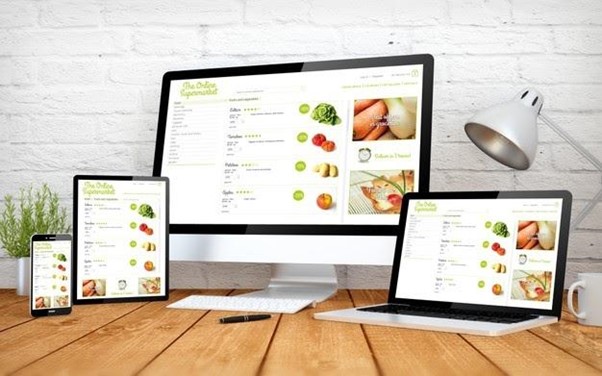
Now that you know the importance of image optimization, let’s dive into the details and find out the best image sizes for Shopify products.
General specs stated by Shopify
Getting the Shopify product photo size is a critical element on the e-commerce platform. You are required to have images that are large enough to give customers zoom-in capabilities. But at the same time, you don’t want the Shopify page to be affected with slow load time by uploading a picture that does not meet the Shopify image requirements.
When it comes to the best size for Shopify images, the e-commerce company doesn’t have one fixed requirement. They allow users to upload a maximum image size of 4472 x 4472 pixels with a file size of 20 MB.
On the other hand, the minimum image size on Shopify is stated to be 800 x 800 pixels. Anything lower than that can affect the zoom-in ability on the product images and cause hindrance to the user’s experience.
Designer’s recommendation for Shopify image sizes

When asked designers and experts of Shopify, they suggested using 2048 x 2048 pixels for square product images. According to them, this is the ideal Shopify picture size and will give merchants a better balance between image quality and fast site loading speed.
In terms of the best resolution for Shopify images, it is recommended to maintain 72dpi. Yes, you can go for lower resolution images too, but remember that it can impact the quality of your product pictures. And with 93% of consumers rating image quality as the most prominent deciding factor, you don’t want to create an obstruction in your potential conversions by uploading a poor-quality visual.
Image ratio for different types of images on a Shopify store
Besides the main product image, Shopify gives you plenty of places to highlight your brand with visuals in front of the visitors. You can use the same guidelines we have outlined above. However, we suggest approaching the different areas of Shopify in an individual manner.
Let’s look at the five different types of Shopify images along with their dimensions.
1. Shopify collections image size
Also known as a gallery, the Shopify collection feature lets the shop owners organize similar category products in their own bucket or groups. They can also add tags to the product pictures, allowing the visitors to further filter their required items.
There is no recommended Shopify collection image size specified by the e-commerce company. You are free to use any dimension up to 4472 x 4472 pixels.
However, our suggestion is to keep the images to a dimension of around 2048 x 2048 pixels. Square product images work the best as they offer the finest quality when zooming in and out.
Another thing to keep in mind with the collection image on Shopify is that the sizes should remain consistent and coherent with each other. This means that the height to width ratio should remain the same. Otherwise, it will mess up the interface of your Shopify store and create a negative impression on your site visitors.
2. Shopify slideshow image size
The Shopify slideshow feature enables the marketers to add a variety of images and videos that can be swiped, dragged, and autoplay. It is part of the primary section of your store’s homepage and gives you the opportunity to highlight the main products and offerings.
This is why it is important that you use visuals that entice the audience to explore your store further. If the pictures fail to impact, the audience is more likely to abandon your page and take their business elsewhere.
The recommended Shopify dimensions for the slideshow area are 1200 x 2000 pixels in width and 400 x 600 pixels in height.
Keep in mind that there is some automatic cropping and readjusting when the same is viewed on a mobile device. So, it is best that you make the pictures middle-aligned as mobile devices will crop the top/bottom and left/right of the images.
3. Shopify header image size
Often marketers prefer to add images in the header section of their website. This gives them another place to highlight their store’s prominent product or an upcoming promotion.
Suppose you are taking advantage of this area. In that case, it is really important that you upload the optimal Shopify image size as the header area is visible on every page of your store. As a matter of fact, the header is the first area that shoppers glance at when browsing your store from top to bottom.
According to the Shopify team, the best Shopify image sizes for the header can range between 100 pixels and 250 pixels. However, we recommend that you use images with a height of no more than 120 pixels for better visibility.
4. Shopify banner image size
When uploading an image for the Shopify banner area, it is important that you take into consideration the specific theme you are using. This is because different Shopify themes require their specific dimensions.
The available themes also automatically crop the edges of the pictures to make them fit the banner section.
It should also be noted that banner images that work well with desktops don’t necessarily adjust automatically on mobile devices. In fact, many users have complained of images that get stretched inappropriately or become blurry on smartphones and tablets.
However, there is no Shopify mobile banner size specified by the company as it mainly depends on the particular theme you are using. To rectify this issue, it is also advisable that you input a customization code to support your image on both - mobile and desktop.
5. Shopify logo size
Shopify recommended logo size is a maximum of 450 x 250 pixels. While it doesn’t necessarily have to be the specified size, make sure that the logo of your Shopify store does not exceed the limit as the sidebar has a width of 250 pixels.
Image sizes based on the types of photos
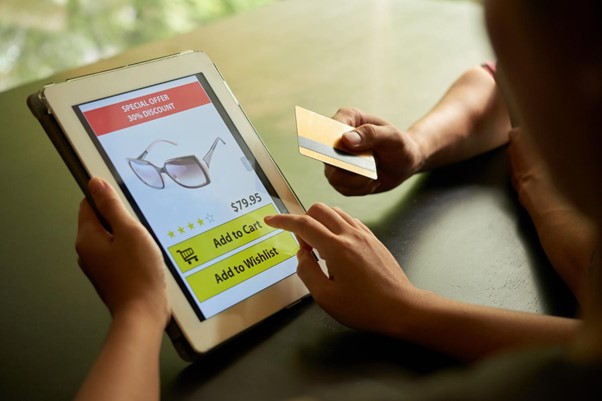
Besides the recommended Shopify product image size, there are many other details you should look into when uploading images on the e-commerce platform.
Image formats for your Shopify store
Now before you start optimizing your store according to the Shopify image size guide, let’s look at the four most commonly used image formats.
1. JPG/JPEG
One of the most used image formats, JPG is popular for boasting small file sizes and impressive color quality. It is also easy to compress, allowing the users to conveniently manipulate the size and quality so it loads faster.
Shopify highly advises its members to use JPEG file format for product images as it offers great quality and a relatively small size for seamless loading.
2. PNG
Another common image format that you will come across on Shopify is the PNG. It is quite popular with Shopify vendors as it offers the designers more control in editing the background, colors, and patterns. PNG also handles detailed, high-contrast images better than other file formats.
The only downside of using PNG in your Shopify store is the size. Since PNG image files are heavier, they can significantly lag your website load speed and impact the user’s browsing experience.
3. GIF
The GIF image files contain up to 256 indexed colors only. They are saved in the lossless format, meaning their quality will not be compromised with compression.
GIFs are a common format when web pages require graphics that contain text such as the navigation buttons. They are also popular for animations and can be used to add a little liveliness to your Shopify store.
4. BMP
BMP is another popular image format that you will see as an option in your Shopify store. It contains uncompressed image data that supports monochrome for the perfect digital images.
However, the drawback of BMP file format is that they are very large in size. To use them in your Shopify store, it is recommended that you use a Shopify product picture size optimizer.
Commonly used Shopify image sizes
Shopify offers different placements of visuals for online stores. These images serve different purposes. But just like the main product image, they each have a suggested optimal size for better visibility.
Here, let’s take a look at the commonly used Shopify images and their recommended sizes.
| Image Type | Size (Width x Height) |
|---|---|
| Favicon | 32 x 32 |
| Menu images | 360 x 360 |
| Newsletter | 425 x 575 |
| Video placeholder image | 1600 x 900 |
| Gallery | 800 x 800 |
| Testimonials | 1600 x 1000 |
| Logo | 450 x 250 |
Types of images to include in your Shopify store

Although Shopify allows their stores to upload 250 pictures per item, it is advisable not to use this many photos as it would affect loading speed. However, you can use multiple types of images in your store to attract an audience and promote your products effectively.
Product-only images
As the name implies, these pictures are standalone shots of your product. Mostly shot on a white or neutral-color background, the product-only images include the ‘hero’ item in different angles to help buyers make a purchase decision.
When taking product photography, it is important that you keep the layout of all the images consistent with each other. It is also worth remembering the Shopify optimal image size requirements for the seamless interface.
Product in use
The second type of photography to use in your Shopify store is the product in use - either in its natural environment or alongside items that complement the primary product.
These types of photographs will help potential customers understand the product better and increase engagement and conversion.
Photographs with graphic overlays
You can get a little creative and add graphic overlays such as text and additional images to your pictures for a unique look. You can do this easily with the help of tools like Canva or similar alternatives.
Graphics
To show informational content, you can use graphics in your Shopify store. This could include a picture showing different variants, a size chart, or even a color picker.
Why you shouldn’t use Shopify theme images?

Most users use free Shopify themes available to build their successful online stores. While these themes are fully editable, they come with certain Shopify website image sizes.
They also offer an image ratio of 1:2.
However, the specified Shopify cover photo size may not do justice to some of your product photos and may require modification.
Luckily, Shopify allows users to edit the photos according to their best practices. So don’t compromise the image quality by going for the size in your selected theme. You can also use tools like TinyImg to modify your product pictures and bring them in the best light.
Image optimization for mobile
Did you know that 79% of mobile users have made a purchase using their smartphone during the last six months? This means that having your images optimized for mobile devices is absolutely necessary in 2022 and beyond.
In most cases, Shopify automatically resizes the pictures to fit mobile and small screen devices. However, you may occasionally need to manually edit the images to adjust on mobile devices.
Some tips to make your image mobile-friendly:
- Avoid using very large images as they may get blurred on mobiles.
- Use square images and keep your product vertically and horizontally centered.
- Use lazy loading to ensure your images load faster on mobile devices.
- Check how your image looks on mobile every time you add one.
Best practices for product images
Choosing images and adhering to the Shopify image size guide is not an easy task. However, great photography influences e-commerce visitors and boosts conversions. So, here are some quick tips to make sure your images work well.
- Consistent editing
To ensure that your site visitors have a consistent experience in your online store, remember to edit your photographs in a consistent manner. This means that the size, style, background, and perhaps even the color layout should remain consistent for a uniform and professional look.
- A/B testing
While these were the recommended best size for Shopify product images, there is no one-size-fits-all approach. Each business is different, and what works for you may not be successful for the other.
This is why you should always experiment with different types of images and styles to find out what suits your store best. Make sure to conduct thorough tests on the images to determine the ones that get you more clicks and conversions.
- Use stock images
You can also use affordable stock images in banners and blogs to illustrate your text. But since stock photographs can sometimes be common, make sure to add your distinctive touch by editing and including overlays to make them relevant to your brand.
Conclusion
While the best product image size for Shopify is not the only thing that will make your products sell, it is certainly the most crucial. So follow the tips above and offer your online visitors with a seamless and attractive browsing experience.
FAQ
Does Shopify resize images?
The Shopify optimal product image size is maximum 5760 x 5760 pixels. Shopify will automatically resize the images according to their preferred dimension if your picture exceeds the specified limit.
What size should product images be for a website?
While you can upload product images to a maximum size of 4472 x 4472 pixels, we recommend going for 2048 x 2048 pixels for the best resolution and zoom-in feature.
How do I make a product image bigger Shopify?
You can use the image editor available on Shopify to edit and resize the images you want to use in your Shopify store.
What is a good product image size?
The average ideal image size is 2000 x 2000 pixels. But you can scale down if you need to.
